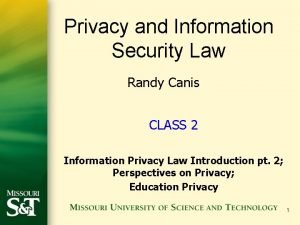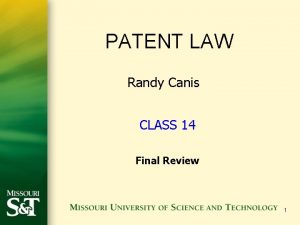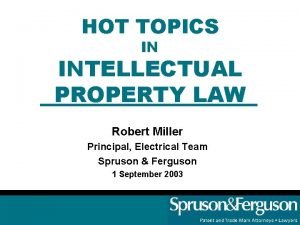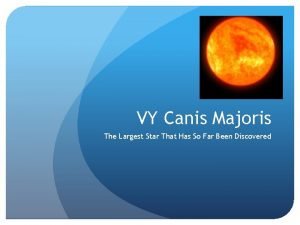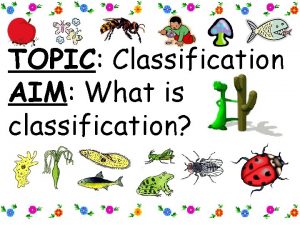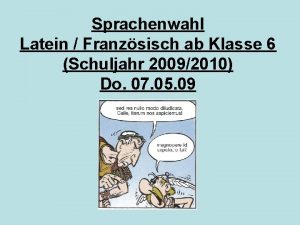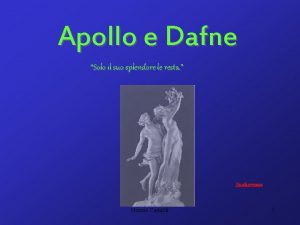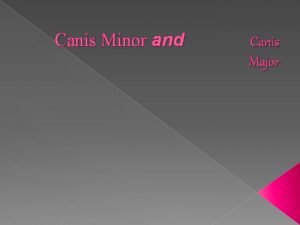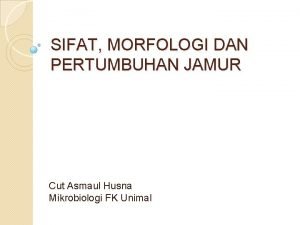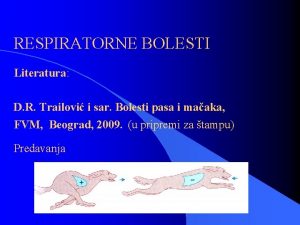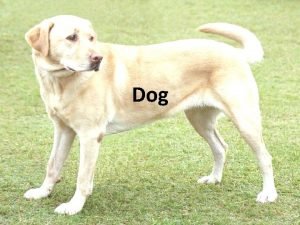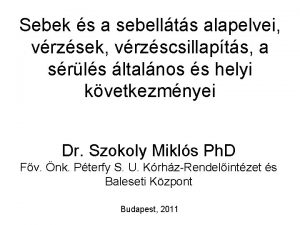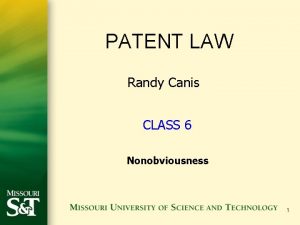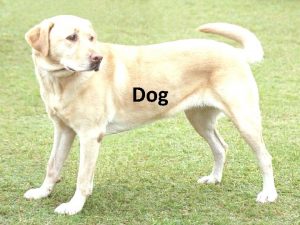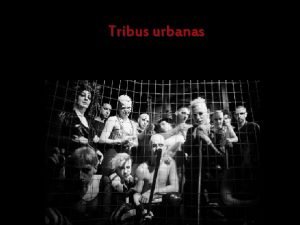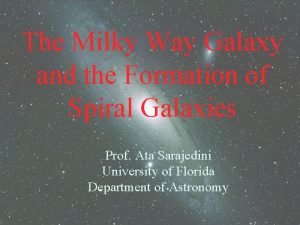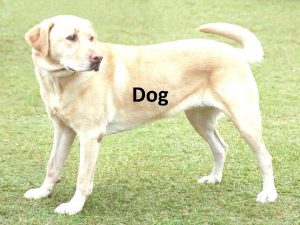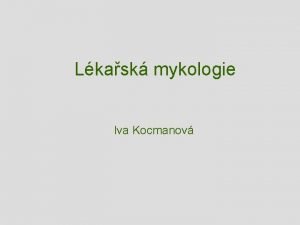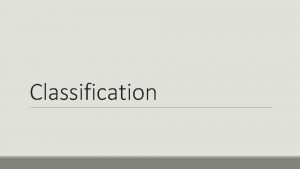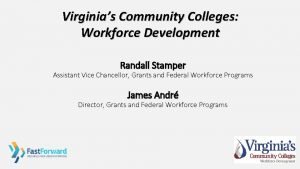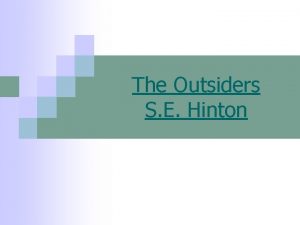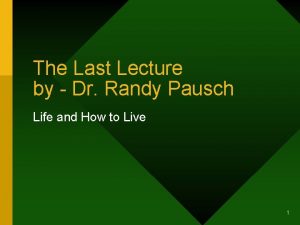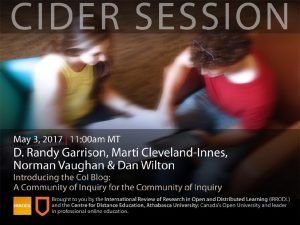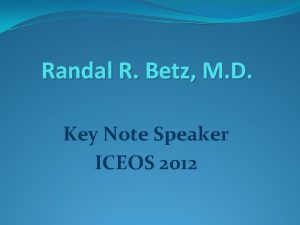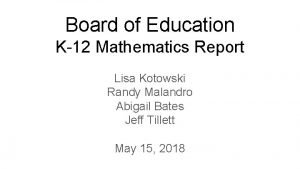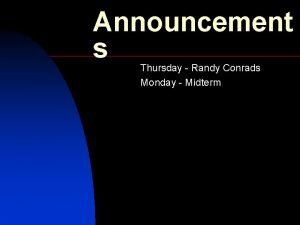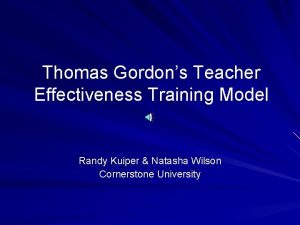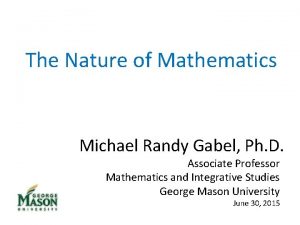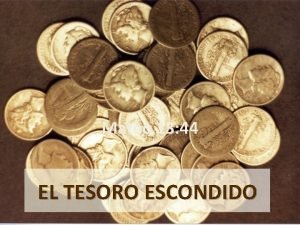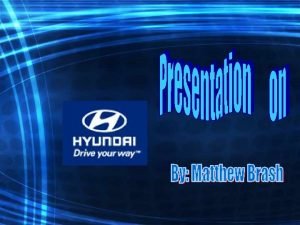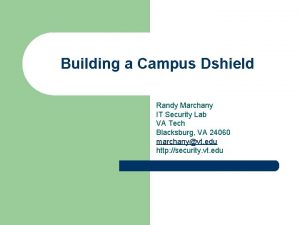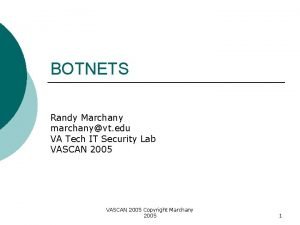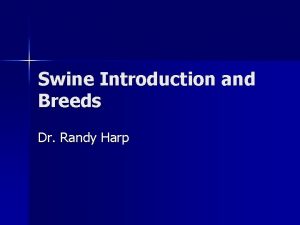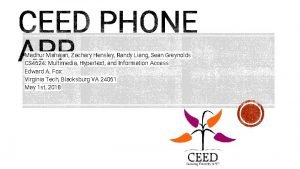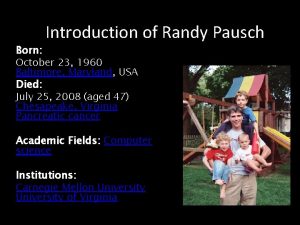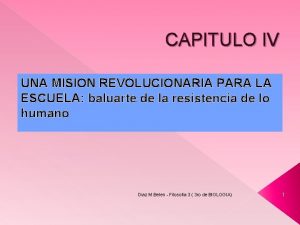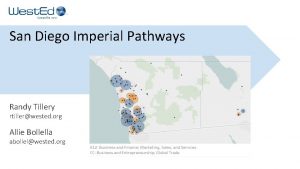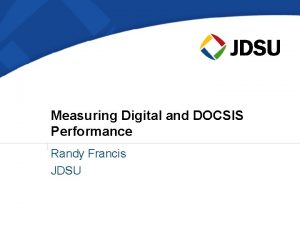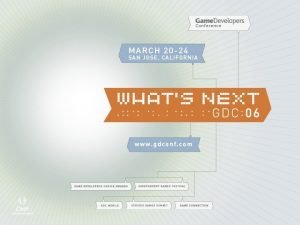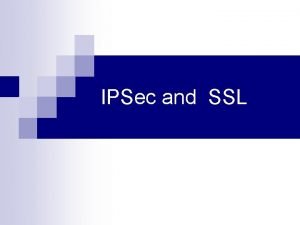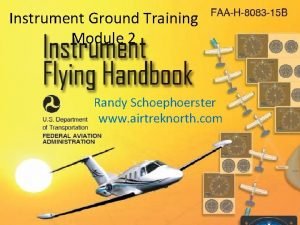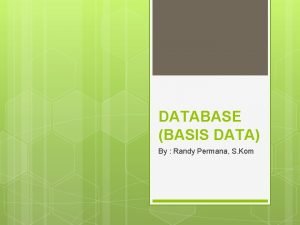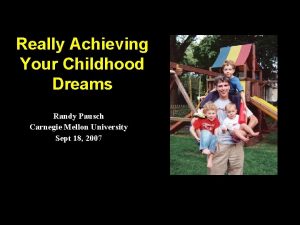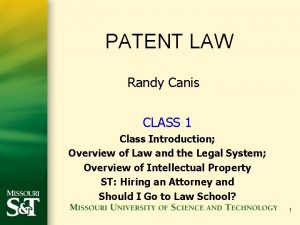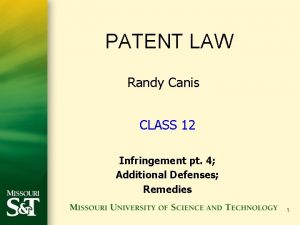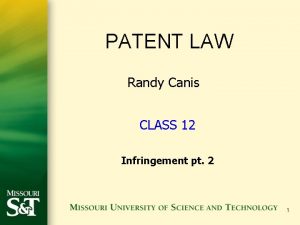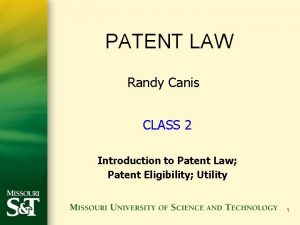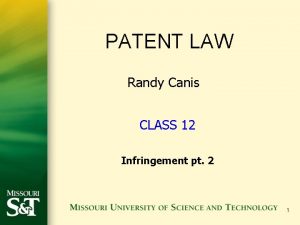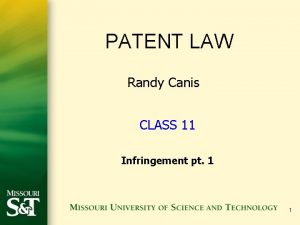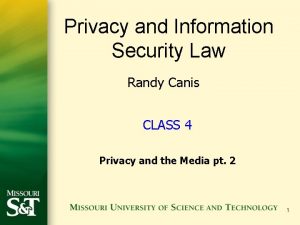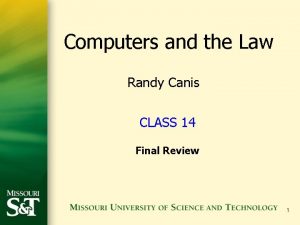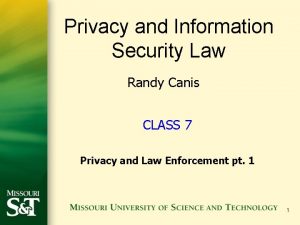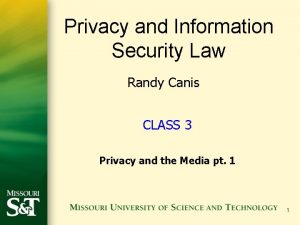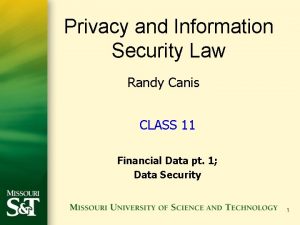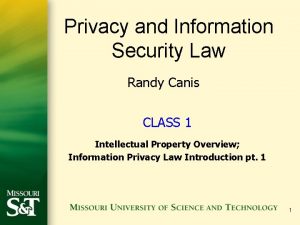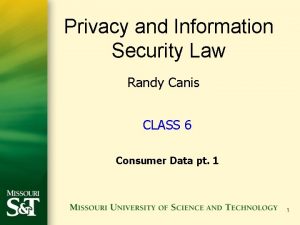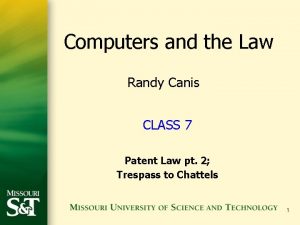PATENT LAW Randy Canis CLASS 15 Case Law






![Mc. RO Discussion • “[C]laims at issue described a specific way (use of particular Mc. RO Discussion • “[C]laims at issue described a specific way (use of particular](https://slidetodoc.com/presentation_image_h2/6323d801ca455f9aad083cc54780f1ea/image-7.jpg)




















![Arendi S. A. R. L. v. Apple • “[W]e stated that although there is Arendi S. A. R. L. v. Apple • “[W]e stated that although there is](https://slidetodoc.com/presentation_image_h2/6323d801ca455f9aad083cc54780f1ea/image-28.jpg)
![Arendi S. A. R. L. v. Apple • “[W]e conclude that while “common sense” Arendi S. A. R. L. v. Apple • “[W]e conclude that while “common sense”](https://slidetodoc.com/presentation_image_h2/6323d801ca455f9aad083cc54780f1ea/image-29.jpg)
































- Slides: 61

PATENT LAW Randy Canis CLASS 15 Case Law Update 1

§ 101 • Some recent decisions favoring software patent eligibility • Additional guidance from the patent office 2

Recent Favorable Decisions • Mc. RO, Inc. dba Planet Blue v. Bandai Namco Games America Inc. , 120 USPQ 2 d 1091 (Fed. Cir. 2016) • BASCOM Global Internet Services v. AT&T Mobility LLC, 827 F. 3 d 1341 (Fed. Cir. 2016). • Amdocs (Israel) Ltd. v. Openet Telecom, Inc. , No. 2015 -1180 (Fed. Cir. Nov. 1, 2016)), 3

Recent Subject Matter Eligibility Decisions • Memo from the Deputy Director at the USPTO • Dated 11/2/16 • Discusses some of the recent decisions 4

Mc. RO Discussion • “In Mc. RO, the Federal Circuit held the claimed methods of automatic lip synchronization and facial expression animation using computer-implemented rules patent eligible under 35 U. S. C. § 101, because they were not directed to an abstract idea (Step 2 A of the USPTO's SME guidance). The basis for the Mc. RO court's decision was that the claims were directed to an improvement in computerrelated technology (allowing computers to produce ‘accurate and realistic lip synchronization and facial expressions in animated characters’ that previously could only be produced by human animators), and thus did not recite a concept similar to previously identified abstract ideas. ” 5

Mc. RO Discussion • “The Mc. RO court thus relied on the specification's explanation of how the claimed rules enabled the automation of specific animation tasks that previously could not be automated when determining that the claims were directed to improvements in computer animation instead of an abstract idea. The Mc. RO court indicated that it was the incorporation of the particular claimed rules in computer animation that ‘improved [the] existing technological process’, unlike cases such as Alice where a computer was merely used as a tool to perform an existing process. ” 6
![Mc RO Discussion Claims at issue described a specific way use of particular Mc. RO Discussion • “[C]laims at issue described a specific way (use of particular](https://slidetodoc.com/presentation_image_h2/6323d801ca455f9aad083cc54780f1ea/image-7.jpg)
Mc. RO Discussion • “[C]laims at issue described a specific way (use of particular rules to set morph weights and transitions through phonemes) to solve the problem of producing accurate and realistic lip synchronization and facial expressions in animated characters, rather than merely claiming the idea of a solution or outcome, and thus were not directed to an abstract idea. ” 7

Notable Points from Mc. RO • “An ‘improvement in computer-related technology’ is not limited to improvements in the operation of a computer or a computer network per se, but may also be claimed as a set of ‘rules’ (basically mathematical relationships) that improve computer-related technology by allowing computer performance of a function not previously performable by a computer. ” 8

Improvements to computer or other technology • “teaching in the specification about how the claimed invention improves a computer or other technology” • “a particular solution to a problem or a particular way to achieve a desired outcome defined by the claimed invention, as opposed to merely claiming the idea of a solution or outcome” 9

BASCOM Discussion • “In BASCOM, the Federal Circuit vacated a judgment of ineligibility because the district court failed to properly perform the second step of the Mayo/Alice framework (Step 2 B of the USPTO's SME guidance) when analyzing a claimed system for filtering content retrieved from an Internet computer network. ” 10

BASCOM Discussion • “The BASCOM court agreed that the additional elements were generic computer, network, and Internet components that did not amount to significantly more when considered individually, but explained that the district court erred by failing to recognize that when combined, an inventive concept may be found in the non-conventional and nongeneric arrangement of the additional elements, i. e. , the installation of a filtering tool at a specific location, remote from the end-users, with customizable filtering features specific to each end user (note that the term "inventive concept" is often used by the courts to describe additional element(s) that amount to significantly more than a judicial exception). ” 11

Notable Point from BASCOM • “In Step 2 B of the USPTO's SME guidance, examiners should consider the additional elements in combination, as well as individually, when determining whether a claim as a whole amounts to significantly more, as this may be found in the nonconventional and non-generic arrangement of known, conventional elements. ” 12

Preemption • “Several recent decisions discuss the role of preemption in the eligibility analysis, and the Office will be addressing preemption in more detail in its forthcoming update to its SME guidance. ” 13

Preemption • “Examiners should continue to use the Mayo/Alice framework (incorporated as Steps 2 A and Step 2 B of the US PTO' s SME guidance and further discussed in this memorandum) to resolve questions of preemption. If applicant argues that a claim does not preempt all applications of the exception, an examiner should reconsider in Step 2 A of the eligibility analysis whether the claim is directed to an improvement in computer-related technology or a specific way of achieving a desired outcome or end result (as discussed in the Mc. RO section of this memorandum and the USPTO' s prior SME guidance). If an examiner still determines that the claim is directed to a judicial exception, the examiner should then reconsider in Step 2 B of the eligibility analysis whether the additional elements in combination (as well as individually) are more than the non-conventional and non-generic arrangement of known, conventional elements. ” 14

Non-Precedential Decisions • “Finally, given the large and ever-increasing number of precedential decisions, examiners should avoid relying upon or citing nonprecedential decisions (e. g. , Smart. Gene, Cyberfone) unless the facts of the application under examination uniquely match the facts at issue in the non-precedential decision. The updated chart of court decisions available on the US PTO' s SME Webpage indicates whether a decision is precedential or nonprecedential. ” 15

§ 103 • Common sense in obviousness 16

Arendi S. A. R. L. v. Apple • Case History – Appeal from PTAB • Claims are obvious – 2016 Fed. Cir. Moore, Linn, and O’Malley (reversed) 17

Arendi S. A. R. L. v. Apple • Invention – “directed to providing beneficial coordination between a first computer program displaying a document and a second computer program for searching an external information source” 18

Arendi S. A. R. L. v. Apple • Background – 11/29/13 - Arendi sues Apple, Google, and Motorolla alleging infringement of claims of the 7, 917, 843 (‘ 843) – 12/2/13 – Apple, Google, and Motorolla filed a inter partes review (IPR) of ‘ 843 19

Arendi S. A. R. L. v. Apple Claim 1 • A computer-implemented method for finding data related to the contents of a document using a first computer program running on a computer, the method comprising: • displaying the document electronically using the first computer program; • while the document is being displayed, analyzing, in a computer process, first information from the document to determine if the first information is at least one of a plurality of types of information that can be searched for in order to find second information related to the first information; • retrieving the first information; 20

Arendi S. A. R. L. v. Apple Claim 1 (cont’d) • providing an input device, configured by the first computer program, that allows a user to enter a user command to initiate an operation, the operation comprising (i) performing a search using at least part of the first information as a search term in order to find the second information, of a specific type or types, associated with the search term in an information source external to the document, wherein the specific type or types of second information is dependent at least in part on the type or types of the first information, and (ii) performing an action using at least part of the second information; 21

Arendi S. A. R. L. v. Apple • Claim 1 (cont’d) • in consequence of receipt by the first computer program of the user command from the input device, causing a search for the search term in the information source, using a second computer program, in order to find second information related to the search term; and • if searching finds any second information related to the search term, performing the action using at least part of the second information, wherein the action is of a type depending at least in part on the type or types of the first information. 22

Arendi S. A. R. L. v. Apple • “The sole prior art reference on appeal is U. S. Patent No. 5, 859, 636 to Pandit (‘Pandit’). Pandit was filed on December 27, 1995, and teaches recognizing different classes of text in a document and providing suggestions based on it. ” 23

Arendi S. A. R. L. v. Apple • The key question in this appeal is whether the Board erred in finding that it would be ‘common sense’ to a person of ordinary skill in the art to search for the telephone number that is detected in a document when the ‘Add to address book’ option disclosed in Pandit is selected. ” 24

Arendi S. A. R. L. v. Apple • PTAB “Petitioner submits that Pandit discloses each limitation of illustrative claim 1 except for performing a search as specified in step (i) of the claim. Petitioner, however, submits further that in order to avoid multiple entries of the same address, it would have been obvious that the first step in adding to an address book is to search the address book to determine if an entry already exists with the entered information, and displaying any associated information that is located. ” 25

Arendi S. A. R. L. v. Apple • “The single question at issue here is whether the Board misused ‘common sense’ to conclude that it would have been obvious to supply a missing limitation in the Pandit prior art reference to arrive at the claimed invention. ” 26

Arendi S. A. R. L. v. Apple • But there at least three caveats to note in applying ‘common sense’ in an obviousness analysis. First, common sense is typically invoked to provide a known motivation to combine, not to supply a missing claim limitation. … Second, in Perfect Web, the only case Appellees identifies in which common sense was invoked to supply a limitation that was admittedly missing from the prior art, the limitation in question was unusually simple and the technology particularly straightforward. Third, our cases repeatedly warn that references to ‘common sense’—whether to supply a motivation to combine or a missing limitation—cannot be used as a wholesale substitute for reasoned analysis and evidentiary support, especially when dealing with a limitation missing from the prior art references specified. ” 27
![Arendi S A R L v Apple We stated that although there is Arendi S. A. R. L. v. Apple • “[W]e stated that although there is](https://slidetodoc.com/presentation_image_h2/6323d801ca455f9aad083cc54780f1ea/image-28.jpg)
Arendi S. A. R. L. v. Apple • “[W]e stated that although there is no problem with using common sense ‘without any specific hint or suggestion in a particular reference, ’ the Board’s ‘utter failure to explain the “common knowledge and common sense” on which it relied’ is problematic. ” 28
![Arendi S A R L v Apple We conclude that while common sense Arendi S. A. R. L. v. Apple • “[W]e conclude that while “common sense”](https://slidetodoc.com/presentation_image_h2/6323d801ca455f9aad083cc54780f1ea/image-29.jpg)
Arendi S. A. R. L. v. Apple • “[W]e conclude that while “common sense” can be invoked, even potentially to supply a limitation missing from the prior art, it must still be supported by evidence and a reasoned explanation. ” 29

Arendi S. A. R. L. v. Apple • “In cases in which ‘common sense’ is used to supply a missing limitation, as distinct from a motivation to combine, moreover, our search for a reasoned basis for resort to common sense must be searching. And, this is particularly true where the missing limitation goes to the heart of an invention. ” 30

Arendi S. A. R. L. v. Apple • “But Appellees have failed to show why it is proper to extrapolate from this general background knowledge of searches in a database to add a search for a telephone number to the Pandit reference. Specifically, Appellees have failed to show why it would be common sense for the ‘Add to address book’ function to operate by first ‘search[ing] for entries with the same telephone number. ’” 31

Inventor Assignment 32

Trieme Medical, LLC v. Angioscore, Inc. • Case History – D. C. • Dismissed the complaint for correction of inventorship – 2016 Fed. Cir. Prost, Dyk, and Chen (reversed and remanded) 33

Trieme Medical, LLC v. Angioscore, Inc. • Background – AS claims exclusive ownership of 8, 080, 026 (‘ 026), 8, 454, 636 (‘ 636), and 8, 721, 667 (‘ 667) – TM claims to have received an assignment of interest from Dr. Chaim Lotan, who seeks to have Dr. Lotan named as an inventor on the patents 34

Trieme Medical, LLC v. Angioscore, Inc. • Invention – angioplasty balloon catheters 35

Trieme Medical, LLC v. Angioscore, Inc. • TM aware of the patents and sought to acquire an interest • Dr. Lotan performed consulting services for AS • Dr. Lotan granted an exclusive license to any rights he had in the patents • AS asserts that it had acquired • rights to all inventive work completed by Dr. Lotan under both § 9(a) and § 9(b) of the Consulting Agreement 36

Trieme Medical, LLC v. Angioscore, Inc. • “When the owner of a patent assigns away all rights to the patent, neither he nor his later assignee has a ‘concrete financial interest in the patent’ that would support standing in a correction of inventorship action. … The question is whether such an assignment to Angio. Score occurred here. ” 37

Trieme Medical, LLC v. Angioscore, Inc. • “The Consulting Agreement contains two provisions material to this appeal: • § 9(a), which relates to Dr. Lotan’s work before the May 1, 2003, effective date; and § 9(b), which relates to Dr. Lotan’s work after the effective date. ” 38

Trieme Medical, LLC v. Angioscore, Inc. • (a) Inventions Retained and Licensed. Consultant has attached hereto, as part of Exhibit C, a list describing all inventions, original works of authorship, developments, improvements, and trade secrets which were made by Consultant prior to the date of this Agreement (collectively referred to as “Prior Inventions”), that belong solely to Consultant or belong to Consultant jointly with another and that relate to any of the Company’s current or proposed businesses, products or research and development; or if no such list is attached, Consultant represents that there are no such Prior Inventions. If, in the course of providing the Services, Consultant incorporates into a Company product, process or machine or into any Invention (as defined below), a Prior Invention owned by Consultant or in which Consultant has an interest, the Company is hereby granted and shall have a non-exclusive license (with the right to sublicense) to make, have made, copy, modify, make derivative works of, use, sell and otherwise distribute such Prior Inventions as part of or in connection with such product, process, machine or Invention. 39

Trieme Medical, LLC v. Angioscore, Inc. • (b) Assignment of Inventions. Consultant agrees to promptly disclose to the Company and hereby assigns to the Company, or its designee, all right, title and interest in and to all inventions, original works of authorship, developments, concepts, know-how, improvements or trade secrets, whether or not patentable, that Consultant may solely or jointly conceive or develop or reduce to practice during the term of this Agreement that relate to the Services (collectively referred to as “Inventions”). 40

Trieme Medical, LLC v. Angioscore, Inc. • AS – no unlisted inventions in A, so all unlisted inventions belong to AS • “According to Dr. Lotan, it was not until 2013 that he learned that the Angio. Score patents had incorporated his alleged recommendation. Dr. Lotan testified that he did not list his work on the pig study under Exhibit C of the Consulting Agreement because he did not consider it an invention at the time. ” 41

Trieme Medical, LLC v. Angioscore, Inc. • AS – study was an invention prior to the agreement, Lotan was required to list it, and his failure to list it assigned all rights to AS • DC agreed • “Contrary to the district court’s conclusion, § 9(a) does not provide for assignment of Dr. Lotan’s rights. ” 42

Trieme Medical, LLC v. Angioscore, Inc. • “What § 9(a) does, at most, is grant Angio. Score a nonexclusive license in the event that the consultant incorporates a Prior Invention into an Angio. Score product during the term of the Consulting Agreement. But such license is not exclusive and would not prevent Dr. Lotan from subsequently assigning his rights in those contributions to Tri. Reme. In short, the district court erred to the extent it relied on § 9(a) to find that Dr. Lotan assigned his rights to Angio. Score. ” 43

Trieme Medical, LLC v. Angioscore, Inc. • “The parties dispute the significance of Dr. Lotan’s role in the development of Angio. Sculpt after the May 1, 2003, effective date. It is not disputed, however, that all of Dr. Lotan’s work during the term of the Consulting Agreement related to designing, implementing, and analyzing clinical trials, including collecting regulatory data. ” 44

Trieme Medical, LLC v. Angioscore, Inc. • “Angio. Score’s theory under § 9(b) is that Dr. Lotan’s work relating to his inventive contribution continued after May 1, 2003, and amounted to both ‘development’ and ‘reduction to practice’ within the meaning of § 9(b). Id. Thus, Angio. Score contends, all of Dr. Lotan’s rights in his inventive contribution were assigned to Angio. Score even if some of his work was performed before May 1, 2003. ” 45

Trieme Medical, LLC v. Angioscore, Inc. • “Whether this work falls under § 9(b) remains a question of fact that cannot be resolved on a motion to dismiss. We remand for the district court to consider whether Dr. Lotan’s continued work on Angio. Sculpt after the effective date came within the language of § 9(b). ” 46

What did we learn? • Consulting and IP assignment agreements matter • How should preexisting rights prior to engagement be addressed in the agreement? • Be careful with inventorship. Perhaps AS have gotten Dr. Lotan to sign an assignment agreement to the patent rights had he been named an inventor. 47

Pre-Issuance Damages 48

Rosebud LMS Inc. v Adobe Systems Inc. • Case History – D. C. summary judgment • Adobe not liable for pre-issuance damages because not actual notice of published application – 2016 Fed. Cir. Moore, Hughes, and Stoll (affirmed) 49

Rosebud LMS Inc. v Adobe Systems Inc. • Invention – techniques for enabling collaborative work over a network of computers 50

Rosebud LMS Inc. v Adobe Systems Inc. • Background – 3 rd patent infringement suit by Rosebud against Adobe – “Adobe moved for summary judgment of no remedies, claiming that Rosebud was not entitled to post-issuance damages because Adobe had discontinued use of the accused technology in January 2013, ten months before the issuance of the ’ 280 patent. Adobe also asserted that Rosebud was not entitled to preissuance damages under § 154(d) because Adobe had no actual notice of the published patent application that led to the ’ 280 patent. ” 51

Rosebud LMS Inc. v Adobe Systems Inc. • “Rosebud argued that Adobe had actual knowledge of the grandparent patent to the ’ 280 patent application; that Adobe followed Rosebud and its product and sought to emulate some of its product’s features; and that it would have been standard practice in the industry for Adobe’s outside counsel in Rosebud II to search for the ’ 280 patent application, which was published before Rosebud II was filed and related to the patent asserted in that suit. ” 52

Rosebud LMS Inc. v Adobe Systems Inc. • “Generally, patent owners may only collect damages for patent infringement that takes place during the term of the patent. See 35 U. S. C. § 271. ” 53

Rosebud LMS Inc. v Adobe Systems Inc. • “Section 154(d) is a narrow exception to that rule: (1) In general. --In addition to other rights provided by this section, a patent shall include the right to obtain a reasonable royalty from any person who, during the period beginning on the date of publication of the application for such patent under section 122(b), … and ending on the date the patent is issued-(A)(i) makes, uses, offers for sale, or sells in the United States the invention as claimed in the published patent application…; and (B) had actual notice of the published patent application… 35 U. S. C. § 154(d). ” 54

Rosebud LMS Inc. v Adobe Systems Inc. • “Without conceding knowledge, Adobe argues that knowledge of the patent would not have been enough—notice had to come directly from the patentee for the ‘actual notice’ requirement to be met. Because it is undisputed that Rosebud did not affirmatively give Adobe notice of the published ’ 280 patent application, Adobe argues that we should affirm the district court’s summary judgment. • “We agree with Adobe and the district court that constructive knowledge would not satisfy the actual notice requirement. …” 55

Rosebud LMS Inc. v Adobe Systems Inc. • Actual notice includes: – Affirmative act giving notice – Knowledge obtained without an affirmative act of notification. 56

Rosebud LMS Inc. v Adobe Systems Inc. • “We do not agree and conclude, as the district court did, that there is no genuine dispute of material fact on the record before us. ” 57

Rosebud LMS Inc. v Adobe Systems Inc. • “But the notice requirement is not limited to the specification. The alleged infringer must also have notice of the claims of the published patent application and the fact that the applicant is seeking a patent covering those claims. Indeed, § 154(d)(2) provides that pre-issuance damages are not available unless the invention claimed in the published patent application is ‘substantially identical’ to the patented invention. Otherwise, the infringer cannot know the scope of the claimed invention. Knowledge of related patents does not serve this function, and is therefore legally insufficient to establish actual notice of the published patent application. ” 58

Questions on the Final Exam? 59

THANKS FOR A GREAT YEAR!!! 60

Program Completed © 2002 -16 Randy L. Canis 61
 Neil pittman
Neil pittman Randy canis
Randy canis Randy canis
Randy canis Randy canis
Randy canis Best case worst case average case
Best case worst case average case Hot topics in patent law
Hot topics in patent law How big is vy canis majoris
How big is vy canis majoris Canis lupus genus
Canis lupus genus Canis parturiens
Canis parturiens Arthroderma otae
Arthroderma otae Primus amor phoebi daphne
Primus amor phoebi daphne Canis donnezani
Canis donnezani Canis minor constellation myth
Canis minor constellation myth Morfologi histoplasma capsulatum
Morfologi histoplasma capsulatum Febris infectiosa canis
Febris infectiosa canis Canis familiaris classification
Canis familiaris classification Vulnus abrasum
Vulnus abrasum Ortho canis
Ortho canis Archiascomycetes
Archiascomycetes Canis familiaris classification
Canis familiaris classification Dark tribu urbana
Dark tribu urbana Toksokaroza canis
Toksokaroza canis Canis major dwarf galaxy
Canis major dwarf galaxy Mylohoideus
Mylohoideus Microsporum canis
Microsporum canis Canis familiaria
Canis familiaria The science of naming and classifying organisms
The science of naming and classifying organisms Randy stamper
Randy stamper Time management randy pausch
Time management randy pausch Steve randle character traits
Steve randle character traits Randy pausch last lecture summary
Randy pausch last lecture summary Randy pausch time management summary
Randy pausch time management summary D. randy garrison
D. randy garrison Randy betz
Randy betz Randy robinson
Randy robinson Fundamentals of web development randy connolly ppt
Fundamentals of web development randy connolly ppt Fasstmath
Fasstmath Randy unger
Randy unger Randy conrads
Randy conrads Thomas gordon model
Thomas gordon model Randy theorem
Randy theorem Randy lawson
Randy lawson Oxalic acid glycerin strips
Oxalic acid glycerin strips Mateo 13 44 dibujo
Mateo 13 44 dibujo L randy knight
L randy knight Randy marchany
Randy marchany Randy marchany
Randy marchany Randy harp
Randy harp Pearson
Pearson Randy liang
Randy liang Randy pausch born
Randy pausch born Randy sparkman
Randy sparkman Randy tillery
Randy tillery Randy francis
Randy francis Level building for stealth gameplay
Level building for stealth gameplay Ssl protocol architecture
Ssl protocol architecture Randy schoephoerster
Randy schoephoerster Randy schoephoerster
Randy schoephoerster Randy smith ups
Randy smith ups Randy permana
Randy permana Names that rhyme with randy
Names that rhyme with randy Randy pausch childhood dreams
Randy pausch childhood dreams

